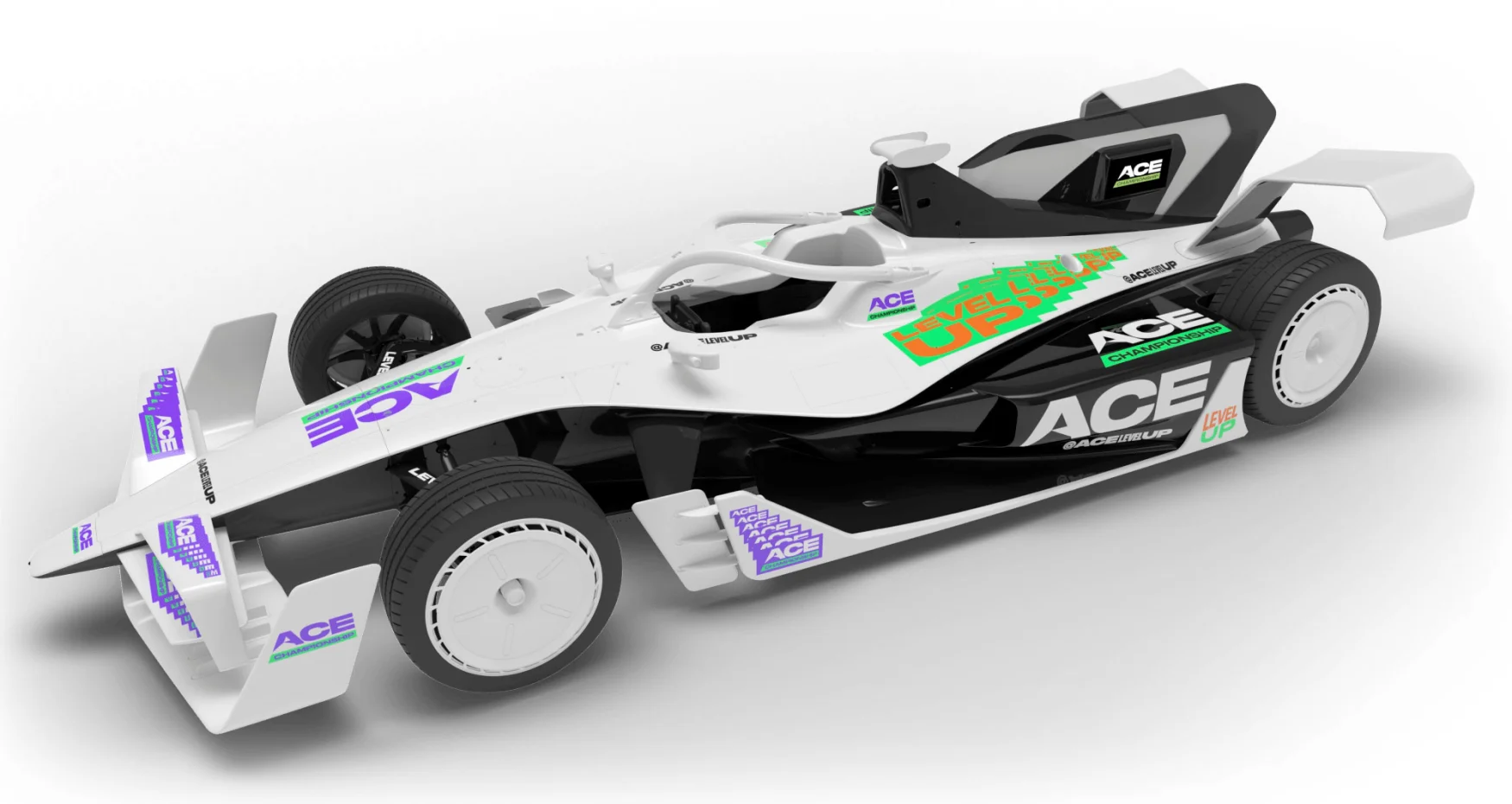Ace Championship is more than just a Formula E feeder series
“There’s nothing in between.”
Ace Championship founder and CEO Dilbagh Gill is explaining the motivation behind building another all-electric racing series. Gill, who was CEO and team principal of Mahindra Racing since Formula E began, left his post last year to embark on something new. His project is one that had been “fermenting” in his mind for a year and a half. “I always thought there had to be a credible ladder in the electric racing series,” he said.
Gill explained that while traditional, combustion-engine racing has had a development path for decades, there’s nothing currently that exists between electric karting and FIA world championships like Formula E. “It’s not something we’re trying to reinvent,” he said. “We’re just trying to take the ladder the other direction.”
A major hurdle for young drivers climbing the ranks in motorsport is cost. It’s not enough for a driver to be quick, they need the financial backing as well. So, in addition to creating a new training ground for future champions, Ace is also working to reduce the barrier to entry when it comes to the cost of equipment. “They have the talent, but they don’t have the opportunity,” Gill noted. “Let’s try and make a championship which can be more inclusive than motorsport is today.”

Subscribe to the Engadget Deals Newsletter
Great deals on consumer electronics delivered straight to your inbox, curated by Engadget’s editorial team. See latest

Please enter a valid email address
Please select a newsletter
By subscribing, you are agreeing to Engadget’s Terms and Privacy Policy.
Ace Championship isn’t just hoping to develop a new crop of drivers each season. The series will also offer opportunities for ages 15-25 who are interested in engineering, communications, marketing and other aspects of motorsport to get real-world experience. Gill said that during his eight years in England at the reins of Mahindra Racing, guest lectures opened his eyes to the fact that nearly 30 percent of university students in motorsport disciplines were from Asia. “What are they going to do next?” he asked himself. “Could something like [Ace] help them find a path?” Gill further explained that Ace would offer a scholarship program to reduce the financial burden even more. “Some talented folks who can’t afford getting in, we will be supporting them,” he said.
As a means of lowering costs, teams will be able to run four drivers with two cars. In most current series, each driver has their own vehicle – hence the high cost to participate. Ace Challenger will be the series’ entry-level format, meant for drivers who found success in karting and are looking for an academy experience. Here, races will run at reduced power so that drivers can acclimate to the car as well as learn about “technique, technology and collaborating with engineers.” Ace Championship is the higher level that runs the cars at increased power output. The focus shifts from the basics to things like detailed race strategy and energy management – two key elements for Formula E and other series.
To further level the playing field, Ace will keep all of the cars at its so-called Powerpark. “We don’t want the cars going back to their garages to start getting modified,” Gill explained. “We want to keep them in a controlled environment.” He also emphasized the importance of building the facilities in Asia. “We think Asia is going to be the melting pot [for electric racing],” he said. “From there, we are within five hours of flying to three or four regions.”
Serving as the series HQ, the campus will offer simulators for each team as well as classroom training on topics like telemetry, working with engineers and social media management. Preparation will be key because the currently proposed format would have each team traveling for around 10 weeks before returning to Powerpark. This means they’ll have to devise strategies for each circuit before they depart since there won’t be simulators to train on while they’re on the road.
With the new championship, Gill and his colleagues are also designing a completely new all-electric racer for the series. When Ace was first announced at the Hyderabad E-Prix in February, Gill showed off a prototype vehicle that was built from a Formula E Gen2 chassis. However, the car the series will use won’t just be modified leftovers from the previous generation forever.
“After eight years at Mahindra Racing, when I left, they gave me a Gen2 car,” Gill said. “So that was an easy acquisition of a prototype – my personal car.”
Ace is currently working to build a brand new chassis, which Gill explained won’t “use anything that exists on the market.” The reason for this, he noted, is that the custom-made cars will run a front powertrain kit and no existing chassis can integrate it “without a lot of work.” The current plan is to have the new cars ready for the third year of the championship, which should begin in 2024. Gill said Ace aims to use its initial design for six years before an anticipated upgrade. Both the Challenger and the Championship series will use the same car with some physical differences – like slight variations to the nose kit and rims. Power output can be controlled by software, which will allow a team’s four drivers to use just the two cars.
Another key element of the car’s design will be LED lighting. Formula E uses lights around the halo of its cars to indicate things like Attack Mode. The Ace Championship aims to make things a bit more dynamic here, with color changes for things like when the driver is accelerating, when a car is regenerating energy through braking or when the driver is coasting. Ace also wants to take a page from the Tour de France and use the LEDs to point out the leader. Gill said the lights could also indicate the driver in P1 as well as green and purple sectors in qualifying or the driver with the current fastest lap. “We have to figure it out,” he admits, but the lights could be a simple way to make races more informative for fans and they’ll undoubtedly provide a unique look during night events.
The series is also exploring the possibility of using two different tire compounds for Ace Challenger and Ace Championship, “so that drivers can understand the different nuances,” according to Gill. He floated the idea that there’s a tire with a smaller performance window for the Challenger series so that you have to bring it to a peak and manage it the rest of the way. And for the Championship, perhaps the tire is “a bit more forgiving… so you can push it without much degradation.” Gill enlisted former Formula 1 and Mahindra Formula E driver Nick Heidfeld to work with tire manufacturers on the various compounds and Ace already has a prototype that it’s currently testing.

At the end of the day, Gill envisions having a car that’s within three to three and a half seconds of the performance of a Formula E car. “The steps are smaller,” he explained. “New people coming to Formula E, especially on the drivers side, it takes a long time for them to get adapted.” The overall idea is for the Ace Championship cars to offer drivers a translatable experience to Formula E in the way Formula 2 does for Formula 1. “This step up from our championship isn’t where a [driver] will struggle for a year,” he said. Drivers who are new to Formula E may be quick over one lap, but variables like tire and energy management can be very challenging for the uninitiated.
“We believe tire and energy management is going to be valuable across all forms of motorsport,” Gill proclaimed. Internal combustion engines have hybrid components in series like Formula 1, and drivers and engineers must learn how to manage and deploy that energy properly during a race. That is amplified in Formula E where you start the race with less energy than it takes to finish. Teams rely on the drivers’ ability to regenerate the difference on track, as well as their strategy for managing consumption on each lap. And, of course, being able to go quick without using up your tires is a valuable skill for any racing discipline.
The Ace Championship plans to schedule races in four different regions: East Asia, Southwest Asia, The Americas and Europe and Africa. During its first two years, the series will only travel to two of those areas with the goal of expanding in 2026. Grouping races like this allows Ace to eliminate the cost of flying teams around the world between events. Racing in each region could take place over the span of a quarter, with the aim of having a new set of drivers each time. While the series hosts its first events in 2024 and 2025, it will also be building a second set of cars. Gill explained that Ace wants to have enough vehicles to have regional events take place while the others are back at Powerpark getting refurbished for the following quarter.
Scheduling is wide open at this point, though. Gill admitted a regional championship may have to be condensed into three weeks so Ace can “synchronize” with the Formula E calendar that runs from January to July. The goal here is to do tandem events with the FIA-sanctioned global EV championship, taking place around the E-Prix during the same weekend, even though it may only be one Ace category due to the time and logistics of street circuits. Again, it’s much like Formula 2 does at some Formula 1 races. Not only will piggybacking off Formula E events provide visibility for the series, but it will give young drivers and support staff a glimpse of how things are done at the next level.
Other Ace races will be standalone, including two of the six events during a regional championship being doubleheaders on back-to-back days. Gill said the current idea is for the independent races to take place on small circuits. Each regional schedule will serve as its own championship, so at the end of the first year, there will be four winners – two from each Ace category.
The ultimate prize for the Ace Championship is to train drivers, race engineers, mechanics and other members of a motorsport team who move on to FIA disciplines like the World Endurance Championship, Formula 2 or Formula 1. And that by doing so, they’re establishing a talent pool across all of those areas ready to contribute to the success of a world championship team.
“Our goal is to make world champions in the next five years,” Gill said.
